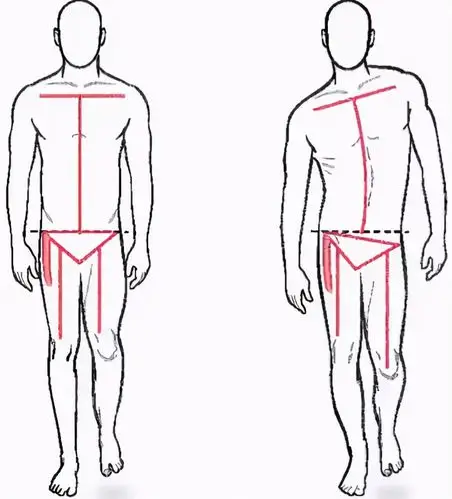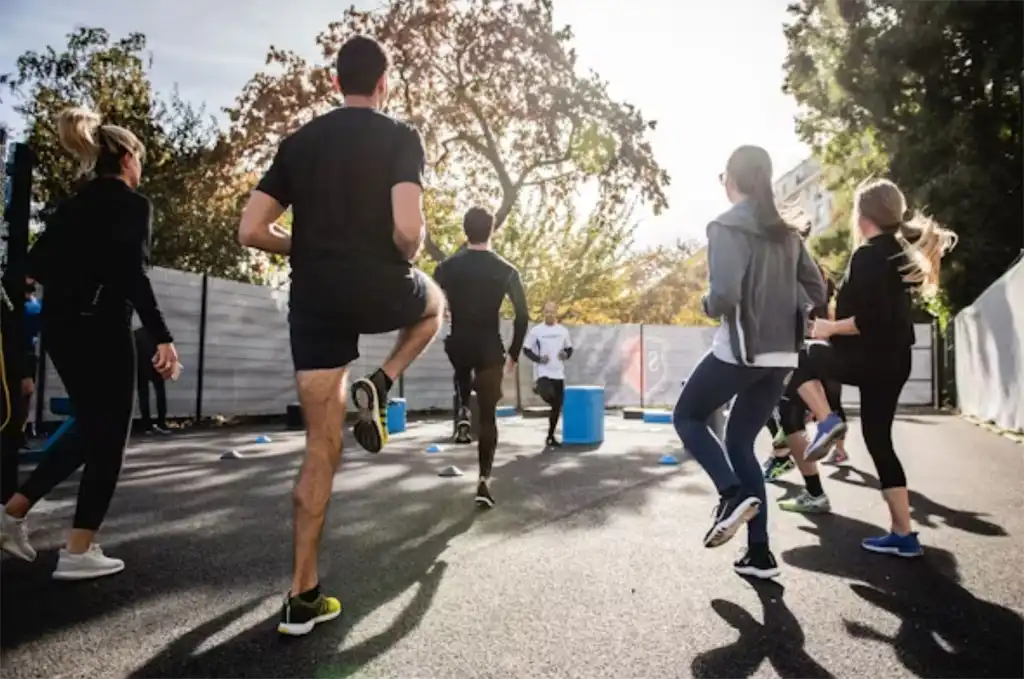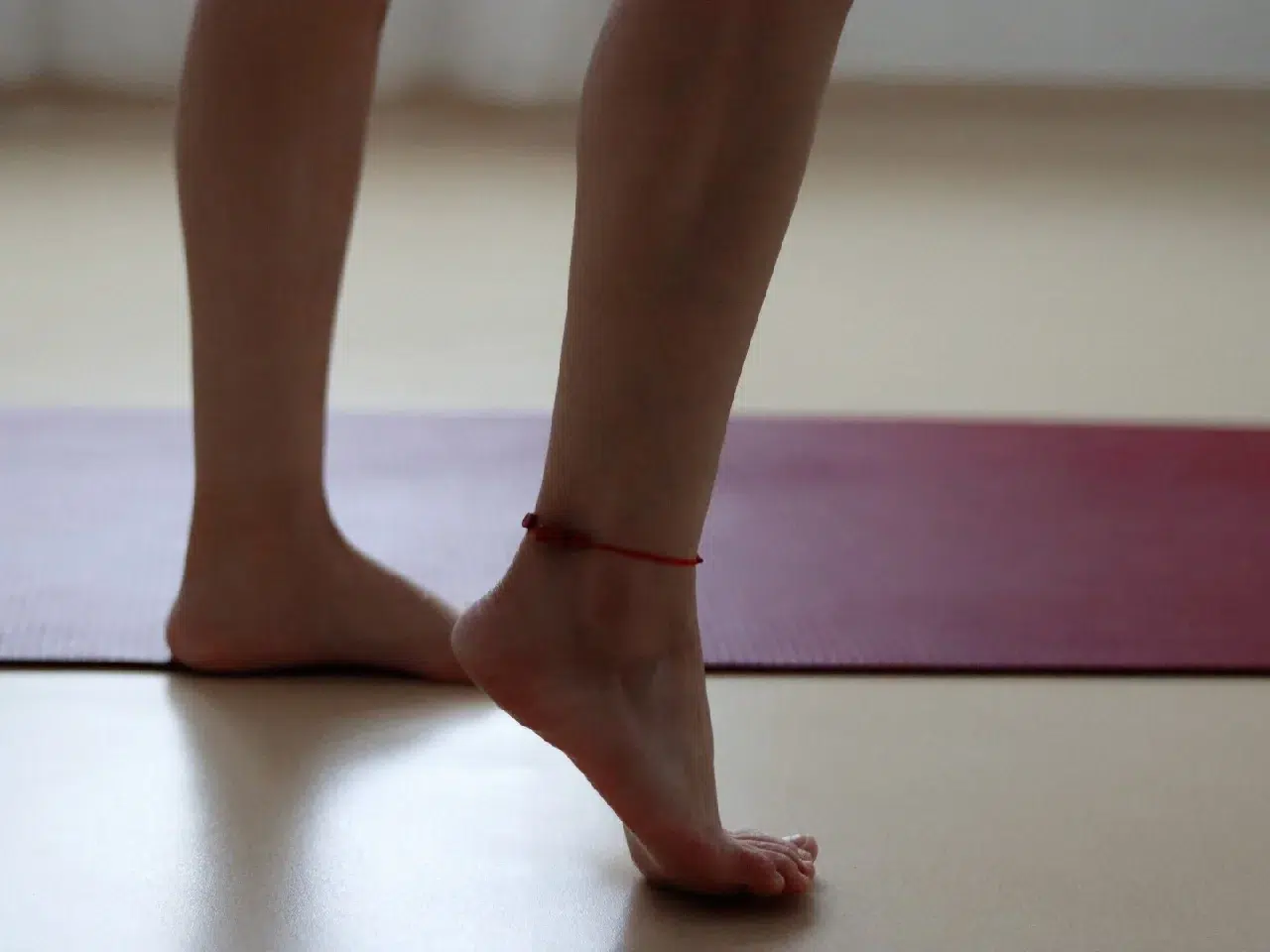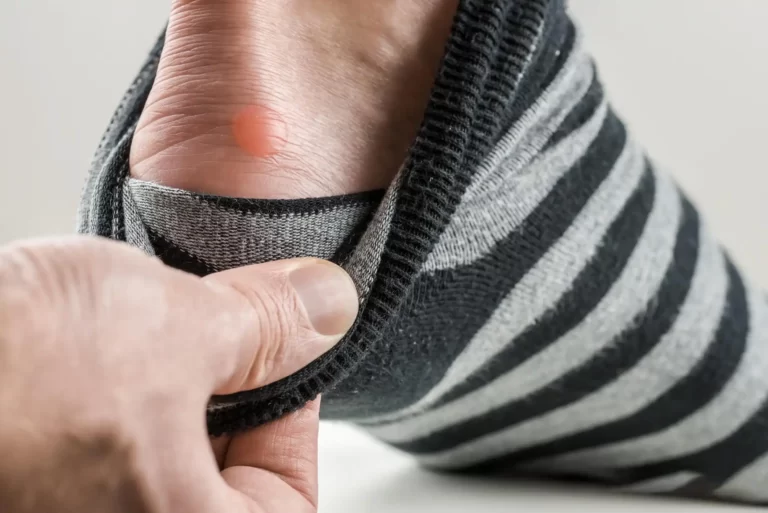Insole for Shorter Leg: Improving Comfort and Stability in Footwear
People with a shorter leg often experience discomfort or alignment issues that can affect daily activities. Many wonder about effective solutions to help manage these challenges. Insoles designed for shorter legs can provide the necessary support and balance, improving posture and reducing pain.
Various types of insoles are available, including heel lifts and full-length orthotics, tailored to individual needs. These specially designed products can compensate for leg length discrepancies, helping to promote better symmetry in movement. By choosing the right insole, users can significantly enhance their comfort and mobility.
Understanding the options available for insoles is crucial for anyone dealing with this condition. Exploring these choices can lead to a more active and pain-free lifestyle.
Understanding Leg Length Discrepancy
Leg length discrepancy occurs when one leg is shorter than the other. This condition may arise due to various reasons and can significantly impact a person’s mobility and posture. Specific causes, effects on gait, and methods for diagnosis are important for effective management.
Causes of Leg Length Discrepancy
Leg length discrepancy can stem from several factors. Structural causes might include congenital conditions, such as limb reduction defects or bone growth issues. Functional causes can arise from factors like muscle imbalances, joint problems, or injuries. Conditions such as scoliosis or uneven pelvic alignment can also contribute to functional discrepancies.

In some cases, factors like previous fractures that do not heal properly can lead to a difference in leg length. Growth spurts during childhood may also cause disparities, particularly if one leg grows faster than the other. Identifying the root cause is crucial for determining appropriate treatment strategies.
Effects on Gait and Posture
When a leg length discrepancy exists, it can lead to noticeable changes in a person’s gait and posture. Individuals may develop an irregular walking pattern, compensating for the shorter leg. This can result in side-to-side swaying or limping, increasing the risk of falls.
Furthermore, the body may adjust by overusing specific muscles, leading to tension and discomfort. The uneven weight distribution can also cause strain on the hips, knees, and lower back. In the long term, these compensations can lead to chronic pain or musculoskeletal issues, necessitating early intervention.
Diagnosis of Leg Length Differences
Diagnosing leg length discrepancy involves several steps to ensure accuracy. A healthcare professional typically begins with a physical examination, assessing the patient’s legs and gait. They may use a measuring tape or a specialized device to measure the lengths of both legs.
Imaging tests, like X-rays or CT scans, can provide further insight into bone structure and alignment. In some cases, doctors may also evaluate the pelvis and spine to check for related issues. Accurate diagnosis is essential for developing an effective treatment plan that addresses both the leg length difference and its impact on the patient’s overall health.
Benefits of Insoles for Shorter Leg
Using insoles for a shorter leg can lead to several significant benefits. These benefits include improvements in balance and stability, reduction of pain and discomfort, and alignment correction that fosters gait symmetry. Each of these aspects plays an essential role in enhancing mobility and overall comfort.
Improvement in Balance and Stability
Insoles for a shorter leg help to correct the difference in leg length. By adding lift to the shorter leg, individuals can achieve a more even distribution of weight. This adjustment is crucial for maintaining balance.

Better balance reduces the risk of falls and injuries. It allows individuals to engage in daily activities with greater confidence. Enhanced stability also contributes to improved performance in sports and physical activities.
Reduction of Pain and Discomfort
Many individuals with leg length discrepancies experience pain in their lower back, hips, and knees. Insoles alleviate this discomfort by providing necessary support. They help to redistribute pressure, reducing strain on joints.
With the right insoles, individuals can experience less fatigue during prolonged standing or walking. This improved comfort can transform everyday activities, allowing for longer, more enjoyable walks or better focus at work.
Alignment Correction and Gait Symmetry
Insoles for shorter legs help to realign the body. Proper alignment minimizes compensatory movements caused by the length difference. This correction leads to better overall posture.

When someone walks or runs with improved alignment, gait symmetry is enhanced. Correct gait reduces stress on muscles and joints, leading to a more efficient and healthier way of moving. Over time, this can prevent the development of secondary issues related to postural imbalances.
Types of Insoles for Leg Length Discrepancy
There are various types of insoles designed to help manage leg length discrepancies. Each type offers different features tailored to improve comfort, alignment, and mobility. The main options include custom orthotics, heel lifts, and adjustable insoles.
Custom Orthotics
Custom orthotics are specially made insoles created based on an individual’s foot structure and walking pattern. They are often prescribed by healthcare professionals after a thorough evaluation. These insoles can provide targeted support to the shorter leg, improving balance and posture.
Custom orthotics can help to reduce discomfort caused by leg length discrepancies. They are designed to fit well within a shoe and can accommodate various foot conditions. The unique shapes are tailored to redistribute body weight evenly and promote proper alignment.
Investing in custom orthotics may come at a higher cost, but many find them beneficial for long-term comfort and mobility. It is essential to consult with a specialist to ensure the correct design and fit.
Heel Lifts
Heel lifts are simple inserts placed under the heel of the shorter leg in a shoe. They effectively add height and help create balance between legs. Generally, heel lifts are available in various heights. This allows users to choose the appropriate lift for their specific needs.
These lifts can be made from different materials like foam or gel, each offering varying levels of support and cushioning. Users often find heel lifts easy to use and adjustable, which makes them versatile for different shoes. They can particularly benefit individuals with mild to moderate leg length discrepancies.
Using heel lifts regularly can help reduce pain caused by misalignment in the lower body. It is advisable to start with a smaller lift and gradually increase the height to avoid discomfort.
Adjustable Insoles
Adjustable insoles are versatile choices that allow for height modifications according to individual requirements. Many come with removable layers or segments, making it easy for users to customize their level of lift. This adaptability helps address changes over time or different footwear requirements.
Individuals can use adjustable insoles to balance their legs while still enjoying comfort. These insoles are ideal for those uncertain about the perfect height needed. They can provide significant support during daily activities, including walking, running, or standing.
Additionally, adjustable insoles can be beneficial for athletic shoes. They can enhance performance by ensuring that the feet are properly positioned within the footwear. This type of insole promotes better stability and reduces the risk of injury.
Materials and Design of Insoles
Choosing the right materials and designs for insoles is vital for comfort and support. Different options cater to varying needs, especially when addressing leg length discrepancies. The two major considerations include the type of cushioning material used and the design format of the insole.
Memory Foam vs. Gel Insoles
Memory foam insoles conform to the shape of the foot. They provide personalized support by evenly distributing weight. This feature helps reduce pressure points, making them ideal for those with longer wear times in shoes.
On the other hand, gel insoles offer a different kind of cushioning. They absorb shocks effectively, making them suitable for high-impact activities. Gel materials provide a cooler feel against the foot, enhancing comfort throughout the day.
Both types have their advantages, thus it is essential to consider personal activity levels and foot shape when selecting the right insole.
Full-Length Insoles vs. Heel Inserts
Full-length insoles cover the entire foot. They provide even support and are great for stabilizing the foot with a leg length difference. These insoles offer additional comfort and alignment, addressing issues not just at the heel but throughout the foot.
Heel inserts focus solely on the back of the foot. They can effectively raise the height of the shorter leg. This targeted elevation helps in achieving better balance and foot alignment.
Choosing between full-length insoles and heel inserts depends on the severity of the discrepancy and personal comfort. Proper fit is crucial for maximizing the insole’s benefits.
Fitting and Adjustment of Insoles
Fitting and adjusting insoles correctly is essential for comfort and effectiveness. The right height adjustment and personalization can greatly improve how they function.
Determining the Correct Height
Choosing the right height for insoles is crucial. Many options are available, such as 4mm, 6mm, 8mm, and up to 15mm lifts to help accommodate different leg length discrepancies.
To determine the correct height, measure the difference in leg length while standing. This can be done using a tape measure. It is often recommended to start with a smaller lift and gradually increase it as needed.
When trying on the insoles, ensure that they fit snugly without causing discomfort. The heel should not slip, and the arch support should align with the foot’s natural curve.
Trimming and Customization Tips
Trimming insoles is sometimes necessary to achieve a better fit. Most insoles are designed with guidelines for trimming.
First, remove the insole from the shoe and trace it onto the new insole. Use scissors to cut along the lines for a precise fit. Ensure that the insole matches the shoe shape, especially around the toe area.
Customization may also include adding padding or adjusting materials for comfort. If an insole feels too firm, consider layering a softer material on top. Always try the adjusted insole on for a comfortable fit before regular use.
Lifestyle and Use Cases
Using insoles for a shorter leg can greatly enhance comfort and improve mobility. These insoles are designed for specific lifestyles and activities, making them suitable for a variety of situations.
Insoles for Athletic Activities
For those engaged in athletic activities, insoles can provide crucial support. Athletes may experience discomfort from leg length discrepancies during sports or workouts.
Insoles designed for sports help to align the body, improving balance and reducing the risk of injury. They can enhance performance by allowing for better biomechanics.
Common sports that benefit from these insoles include running, soccer, and basketball. Athletes may find that custom or adjustable height insoles are particularly effective.
When choosing insoles, it’s important to consider the level of cushioning and support, as well as the type of footwear used. Performance can be affected positively with the right insole.
Insoles for Everyday Wear
For daily life, insoles for a shorter leg offer comfort throughout various activities. Many people spend long hours standing or walking, making proper support essential.
Insoles designed for everyday use can be integrated into regular shoes or work boots. They can help alleviate discomfort related to leg length discrepancy, such as back pain or uneven gait.
When selecting insoles for daily wear, consider factors such as foot arch type, material, and ease of use. For example, lightweight and breathable materials can enhance comfort during long periods of wear.
These insoles can also fit into different shoe styles, ensuring versatility for any occasion. By improving posture and reducing strain, everyday insoles can significantly impact overall well-being.
Maintenance and Care for Insoles
Proper maintenance and care of insoles is essential for comfort and effectiveness. Regular cleaning and timely replacement help ensure they function well and support the user’s needs.
Cleaning and Hygiene
To maintain hygiene, insoles should be cleaned regularly. Most insoles can be wiped down with a damp cloth to remove dirt and sweat. Soaking them in a mild soap solution is also effective. After cleaning, it’s crucial to dry them thoroughly to prevent mold or odors.
Avoid using harsh chemicals, as these can damage the materials. For odor control, baking soda can be sprinkled on the insoles and left overnight before shaking it off. Ensure the shoes themselves are cleaned to help keep the insoles fresh.
Lifespan and Replacement Frequency
Insoles generally last between 6 to 12 months, depending on usage. Factors such as foot type, activity level, and quality of the insole impact lifespan. If the insole shows signs of wear, such as cracking or flattened areas, it’s time for a replacement.
Regularly check for changes in comfort or support. If discomfort persists, consider replacing them sooner. Keeping a calendar reminder for replacements can help maintain foot health and ensure optimal support.
Choosing the Right Insole Provider
Selecting the right insole provider is crucial for ensuring comfort and support, especially for those with a shorter leg. Various factors play a role in making an informed choice, from product quality to professional advice.
Criteria for Selection
When choosing an insole provider, there are several key criteria to consider:
- Product Range: A good provider should offer various insole options tailored to different needs, including various heel lift thicknesses. Options should be available for various shoe sizes and types.
- Quality Materials: Insoles made from durable and breathable materials enhance comfort and longevity. Look for providers that emphasize high-quality manufacturing.
- Customization: Some individuals might require custom insoles for a better fit. Providers that offer personalized fitting services can cater to unique needs more effectively.
- Customer Support: Reliable customer service is essential. Providers should offer assistance with inquiries and issues regarding their products.
- Return Policy: A fair return policy allows customers to exchange or return insoles if they do not fit properly or meet expectations.
Consultation with Healthcare Professionals
Before making a purchase, consulting with healthcare professionals can provide valuable insights. Professionals such as podiatrists or orthopedic specialists can assess individual needs and recommend the best types of insoles.
- Personal Evaluation: A healthcare professional can evaluate leg length discrepancy and suggest specific insole features to alleviate discomfort.
- Advice on Fit: They can provide guidance on proper insole fitting and the types of shoes that work best with insoles for shorter legs.
- Progress Monitoring: Ongoing consultations can help track improvements in comfort and posture, adjusting insoles as necessary.
- Treatment Plans: Healthcare providers may suggest complementary treatments like physical therapy or exercises to enhance the benefits of insoles.
By considering these elements, individuals can make a more informed choice about insole providers, ensuring they find a solution that fits their needs.
Legal and Compliance Aspects
Understanding the legal and compliance aspects for insoles designed for shorter legs is essential for consumers and providers. This section covers the regulations governing these medical devices and the insurance coverage that may apply.
Regulations on Medical Devices
Medical devices, including insoles for leg length discrepancy, fall under specific regulations set by government bodies. In the United States, the Food and Drug Administration (FDA) categorizes these products as Class I or Class II devices, depending on their intended use and risk level.
For insoles that are classified as medical devices, manufacturers must submit necessary documentation demonstrating safety and effectiveness. Compliance with the FDA’s Good Manufacturing Practices (GMP) is also essential.
In the European Union, the Medical Device Regulation (MDR) imposes strict requirements on manufacturers for safety, clinical evaluation, and post-market surveillance. This ensures that consumers receive high-quality, reliable products.
Insurance and Coverage Options
Insurance coverage for insoles can vary widely based on the policy and provider. Many health insurance plans may cover the cost of custom orthotic devices if prescribed by a healthcare professional.
Patients should consult with their insurance providers to understand specific benefits. A common requirement is that a doctor must provide a prescription, detailing the medical need for the insoles.
Some plans might limit coverage to certain types of orthotics or require a copayment. Patients should also check if coverage relates to specific conditions causing leg length discrepancies. Documenting the medical necessity can assist in claims approval and reimbursement efforts.
Frequently Asked Questions
This section addresses common questions about insoles for individuals with a shorter leg. It covers types of inserts, their corrective functions, the role of healthcare professionals, and considerations for selecting appropriate products.
What are the best types of shoe inserts for managing leg length discrepancy?
The best shoe inserts for managing leg length discrepancy often include custom orthotics and heel lifts. These inserts help to equalize the leg lengths and provide better support and comfort. Some popular options are foam, gel, or rigid materials based on individual needs.
How can orthopedic insoles correct a shorter leg?
Orthopedic insoles can correct a shorter leg by adding height to the shoe of the shorter leg. This adjustment promotes balance and alignment. Customized orthotics can also support proper foot positioning for improved gait and reduced discomfort.
What is the role of podiatrists in treating leg length discrepancy?
Podiatrists play a crucial role in diagnosing and treating leg length discrepancy. They assess the severity of the condition and recommend appropriate insoles or orthotic devices. Their expertise aids in creating a tailored treatment plan to improve the patient’s mobility and comfort.
How do shoe lifts compare to built-up shoes for addressing the differences in leg length?
Shoe lifts are inserts placed inside the shoe, while built-up shoes are designed to be higher on one side. Lifts offer flexibility since they can be added to existing shoes. Built-up shoes may provide a more permanent and integrated solution, but they can be more expensive and less versatile.
Can specialized insoles for plantar fasciitis also accommodate leg length discrepancy?
Yes, specialized insoles for plantar fasciitis can accommodate leg length discrepancy. Many of these insoles provide arch support and cushioning while allowing for adjustments in height. It’s important to select insoles that address both conditions to ensure optimal foot health.
What considerations should women have when selecting insoles for a shorter leg?
Women should consider the type of shoes they typically wear. Heeled shoes may require thinner insoles or specific designs to fit properly. The level of support, material, and comfort are also important factors to ensure that the insoles do not restrict movement or cause discomfort.







